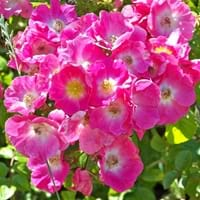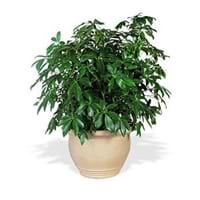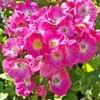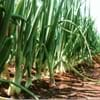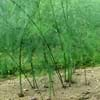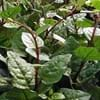Life Span
Annual and Perennial
Perennial
Type
Perennial
Broadleaf Evergreen
Origin
Hybrid origin
Southeastern Asia, China
Types
it is a type of rose
Schefflera actinophylla, Schefflera morototoni, Schefflera heptaphylla
Habitat
Not Available
Moist Soils
USDA Hardiness Zone
5-8
10-15
AHS Heat Zone
10-1
Not Available
Sunset Zone
A1, A2, A3, H1, H2, 1a, 1b, 2a, 2b, 3a, 3b, 4, 5, 6, 7, 8, 9, 10, 11, 12, 13, 14, 15, 16, 17, 18, 19, 20, 21, 22, 23, 24
21,22
Habit
Vining/Climbing
Oval or Rounded
Minimum Width
Not Available
Flower Color
White, Pink
Red, Bronze
Flower Color Modifier
Not Available
Bicolor
Fruit Color
Non Fruiting Plant
Orange, Black
Leaf Color in Spring
Dark Green
Green
Leaf Color in Summer
Dark Green
Green, Dark Green
Leaf Color in Fall
Dark Green
Green, Dark Green
Leaf Color in Winter
Light Green
Dark Green
Plant Season
Summer
Spring, Summer, Fall, Winter
Sunlight
Full Sun, Partial Sun
Partial Sun, Partial shade
Growth Rate
Medium
Medium
Type of Soil
Loam, Sand
Loam, Sand
The pH of Soil
Acidic, Neutral
Acidic, Neutral, Alkaline
Soil Drainage
Well drained
Well drained
Bloom Time
Summer, Late Summer
Early Summer, Summer
Tolerances
Drought
Not Available
Where to Plant?
Container, Ground, Pot
Container, Ground, Pot
How to Plant?
Divison, Seedlings
Cuttings
Plant Maintenance
Medium
Medium
Watering Requirements
Water Deeply, Water in morning to avoid prompting diseases
Allow to dry out slightly between watering, Average Water Needs, Do Not over Water, Keep ground moist, Requires regular watering
In Summer
Lots of watering
Lots of watering
In Spring
Moderate
Moderate
In Winter
Average Water
Average Water
Soil pH
Acidic, Neutral
Acidic, Neutral, Alkaline
Soil Type
Loam, Sand
Loam, Sand
Soil Drainage Capacity
Well drained
Well drained
Sun Exposure
Full Sun, Partial Sun
Partial Sun, Partial shade
Pruning
Prune after flowering, Remove damaged leaves, Remove dead branches
Prune if you want to improve plant shape, Prune ocassionally, Remove damaged leaves, Remove dead branches, Remove dead leaves, Remove dead or diseased plant parts, Remove deadheads
Fertilizers
Fast release fertilizer, Fertilize in early spring, Fertilize three times a year
All-Purpose Liquid Fertilizer, Fertilize once a year
Pests and Diseases
Aphids, Black Spot, Caterpillars, Downy mildew, glasshouse red spider mite, Insects, Leaf Hoppers, Powdery mildew, rose leaf-rolling sawfly, Rust, Scale
Red blotch
Plant Tolerance
Drought
Not Available
Flowers
Showy
Insignificant
Flower Petal Number
Single
Single
Fragrant Bark/Stem
No
Yes
Foliage Texture
Medium
Medium
Foliage Sheen
Glossy
Glossy
Attracts
Not Available
Ants, Aphids, Birds, Bugs, Wildlife
Allergy
Not Available
breathing problems, Burning sensation, Difficulty swallowing, Poisonous, Swelling
Aesthetic Uses
Showy Purposes, Used for decorating walls, fences, gates, hedges, etc.
Bonsai, Showy Purposes
Beauty Benefits
Perfumes
Not Available
Edible Uses
No
Insignificant
Environmental Uses
Air purification
Air purification, Indoor Air Purification
Medicinal Uses
No Medicinal Use
Abdominal Disease, Arthritis, Bleeding, Kidney Stones, Muscle Pain, Recovering internal injuries, Rheumatism, Swelling, Upset stomach
Part of Plant Used
Flowers, Whole plant
Flowers, Root
Other Uses
Used as Ornamental plant
Container, Showy Purposes, Used for making hedge
Used As Indoor Plant
Yes
Yes
Used As Outdoor Plant
Yes
Yes
Garden Design
Cutflower, Feature Plant, Groundcover, Hedges, Mixed Border, Rock Garden / Wall, Topiary / Bonsai / Espalier, Vine
Container, Foundation, Hedges, Houseplant, Mixed Border, Screening, Wind Break, Topiary, Bonsai, Espalier, Tropical
Botanical Name
ROSA 'American Pillar'
SCHEFFLERA arboricola
Common Name
Climbing Rose, Rambling Rose
Umbrella plant
In Hindi
Climbing Rose
Arboricola
Plant
In German
Kletterrose
arboricola
Pflanze
In French
escalade Rose
arboricola
Plante
In Spanish
Rose que sube
arboricola
Planta
In Greek
αναρρίχηση Rose
Αρμπορικόλα
Φυτό
In Portuguese
Rosa de escalada
arboricola
Plantar
In Polish
Climbing Rose
arboricola
Roślina
In Latin
Rosa scandere
arboricola
planta
Phylum
Magnoliophyta
Vascular plant
Class
Magnoliopsida
Magnoliopsida
Family
Rosaceae
Araliaceae
Clade
Not Available
Angiosperms, Asterids, Eudicots
Tribe
Not Available
Not Available
Subfamily
Not Available
Aralioideae
Number of Species
Not Available
Not Available
Season and Care of Climbing Rose and Arboricola
Season and care of Climbing Rose and Arboricola is important to know. While considering everything about Climbing Rose and Arboricola Care, growing season is an essential factor. Climbing Rose season is Summer and Arboricola season is Summer. The type of soil for Climbing Rose is Loam, Sand and for Arboricola is Loam, Sand while the PH of soil for Climbing Rose is Acidic, Neutral and for Arboricola is Acidic, Neutral, Alkaline.
Climbing Rose and Arboricola Physical Information
Climbing Rose and Arboricola physical information is very important for comparison. Climbing Rose height is 300.00 cm and width Not Available whereas Arboricola height is 243.84 cm and width 182.88 cm. The color specification of Climbing Rose and Arboricola are as follows:
Climbing Rose flower color: White and Pink
Climbing Rose leaf color: Dark Green
Arboricola flower color: Red and Bronze
- Arboricola leaf color: Green
Care of Climbing Rose and Arboricola
Care of Climbing Rose and Arboricola include pruning, fertilizers, watering etc. Climbing Rose pruning is done Prune after flowering, Remove damaged leaves and Remove dead branches and Arboricola pruning is done Prune if you want to improve plant shape, Prune ocassionally, Remove damaged leaves, Remove dead branches, Remove dead leaves, Remove dead or diseased plant parts and Remove deadheads. In summer Climbing Rose needs Lots of watering and in winter, it needs Average Water. Whereas, in summer Arboricola needs Lots of watering and in winter, it needs Average Water.
